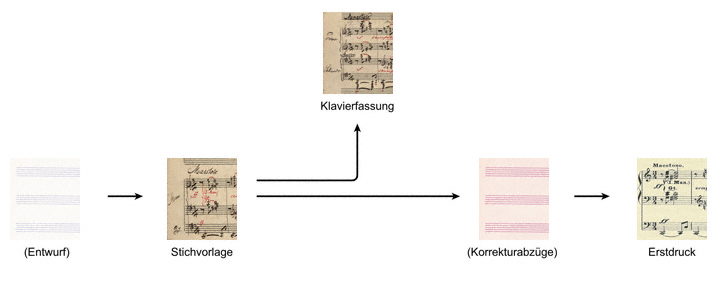Variations and Fugue on The Englisch National Anthem WoO IV/7
for organ
- I.
- II. Fugue
- -
- -
- -
1.
| Reger-Werkausgabe | Bd. I/2: Phantasien und Fugen, Variationen, Sonaten, Suiten I, S. 114–122. |
| Herausgeber | Alexander Becker, Christopher Grafschmidt, Stefan König, Stefanie Steiner. |
| Verlag | Carus-Verlag, Stuttgart; Verlagsnummer: CV 52.802. |
| Erscheinungsdatum | Februar 2011. |
| Notensatz | Carus-Verlag, Stuttgart. |
| Copyright | 2011 by Carus-Verlag, Stuttgart and Max-Reger-Institut, Karlsruhe – CV 52.802. Vervielfältigungen jeglicher Art sind gesetzlich verboten. / Any unauthorized reproduction is prohibited by law. Alle Rechte vorbehalten. / All rights reserved. |
| ISMN | M-007-09485-0. |
| ISBN | 978-3-89948-141-9. |
1. Composition
1.1.
Adalbert Lindner reported that the occasional piece, Variations and Fugue on The English National Anthem owed ““its origin to the death of Queen Victoria of England […]. Reger composed the work specially at the request of the Munich publisher Eugen Spitzweg (of the firm of Joseph Aibl), who probably hoped to achieve greater sales of this work capitalizing on the patriotic mood in England”.” 1 Admittedly Reger had written the piece while the Queen was still alive: the version for piano duet, probably written at the same time as the organ version, bears a date of completion of 17 January 1901, whereas Queen Victoria died on 22 January. The copyright agreement and the confirmation of the receipt of fees for both versions were signed by Reger on 25 January 1901. As, according to a report in the Times,2 the Queen’s state of health had deteriorated considerably towards the end of 1900 and reports of this could certainly also be read in the German press, the course of events depicted by Lindner was perfectly conceivable.
2. Publication
2.1.
Because of events, publication followed quickly, so that Reger was able to send the first edition of the organ version to Ernst Rabich on 10 February 1901: “And furthermore you will find ‘Variations and Fugue’ on the German and English national anthems, respectively, for organ herewith. To my knowledge nothing of this kind exists for organ on this theme […]; naturally the work had to be sufficiently simple and easy so that less technically able organists can also use it; I […] would ask you for a favorable review of the same in the highly regarded ‘Blätter für Haus- u. Kirchenmusik’. I will send you the excerpt for piano duet as soon as it is published and am now asking you in advance for a favorable review of the same after publication!” (Letter to Ernst Rabich) Rabich received the piano version on 28 February 1901 (see letter to Ernst Rabich), and Otto Leßmann a good month later, likewise accompanied by a request for a review (in the Allgemeine Musik-Zeitung); at the same time Reger referred to the intended “use at royal festivities etc. etc. etc.”, (Letter to Otto Leßmann) however he also made no mention here of the circumstances of the piece’s creation reported by Lindner.
3.
Translation by Elizabeth Robinson.
1. Reception
At present, there are no records of performances in Reger's time.
1. Stemma

2. Quellenbewertung
Der Edition liegt als Leitquelle der Erstdruck zugrunde. Als zusätzliche Quelle wurde die autographe Stichvorlage herangezogen. Die Fassung für Klavier zu vier Händen blieb aufgrund der unterschiedlichen satztechnischen Faktur von Orgel- und Klaviermusik bei editorischen Entscheidungen von sekundärer Bedeutung.
3. Stemma

4. Quellenbewertung
Der Edition liegt als Leitquelle der Erstdruck zugrunde. Als zusätzliche Quelle wurde die autographe Stichvorlage herangezogen. Die Fassung für Klavier zu vier Händen blieb aufgrund der unterschiedlichen satztechnischen Faktur von Orgel- und Klaviermusik bei editorischen Entscheidungen von sekundärer Bedeutung.
5. Sources
Object reference
Max Reger: Variations and Fugue on The Englisch National Anthem WoO IV/7, in: Reger-Werkausgabe, www.reger-werkausgabe.de/mri_work_00704.html, version 3.1.5, 30th September 2025.
Information
This is an object entry from the RWA encyclopaedia. Links and references to other objects within the encyclopaedia are currently not all active. These will be successively activated.